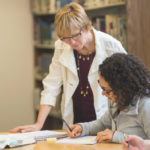
Critical Thinking: As a Course Goal and in Assignments
Designed as guide for faculty reading groups, this resource includes quotations from and questions about an article on a seldom-studied topic: the connection between course

Designed as guide for faculty reading groups, this resource includes quotations from and questions about an article on a seldom-studied topic: the connection between course

About seven years ago I wrote a blog post about a family meltdown. My manually dexterous and spatially oriented engineer spouse was trying to tell

I recently discovered a 2014 study that reported on student-generated multiple-choice questions. It was the results that really caught my attention: “We find that these

This is a required course. To many of you it looks (and may well be) unrelated to your major and your interests. If it weren’t

A new survey documents what most teachers already know: students don’t devote much time to their course-assigned readings (Sharma, Van Hoof, & Ramsay, 2019). And

The new academic year is fast approaching, and course preparations are either underway or on everyone’s mind. We begin every semester, every year, wanting all

A new academic year is about to begin, and, well, there’s this course—maybe more than one—that you’re not exactly bristling with excitement to teach. What

Students look to teachers for leadership. The teacher is the person in charge—the course’s designated person in charge. That’s hardly revelatory, but how does leadership

Many faculty (probably most who read this column) willingly do a great many things to help students learn. For example, we know that our courses

Do the things we know about how students learn apply to faculty when they’re learning about teaching? That question follows me around. I think about